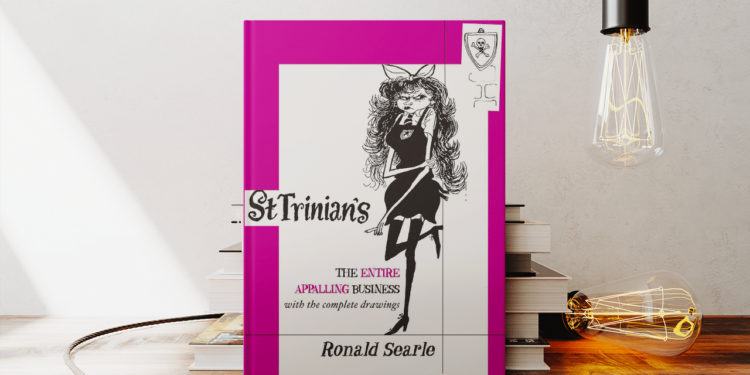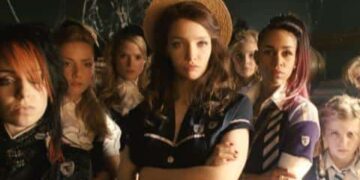Ronald Searle, a renowned British artist and satirical cartoonist, has left an indelible mark on the world of media and pop culture. Born on March 3, 1920, in Cambridge, England, Searle’s artistic journey began at an early age. His unique style, characterized by intricate pen and ink drawings, captured the attention of audiences worldwide. Throughout his career, Searle’s work transcended traditional boundaries, influencing not only the field of comics but also finding its way into film and television adaptations. In this article, we delve into the life and impact of Ronald Searle, uncovering intriguing tidbits about his personal life, exploring his artistic style, and examining the legacy he has left behind.
Ronald Searle’s Biography – Early Life, Education, and Career
Ronald Searle’s early life laid the foundation for his future artistic endeavors. Growing up in Cambridge, he displayed a natural talent for drawing from a young age. Despite the challenges posed by World War II, Searle pursued his passion for art and eventually enrolled at the Cambridge School of Art. It was during his time at the school that he began his career as a cartoonist, contributing to various publications.
Searle’s career took an unexpected turn when he was enlisted in the Royal Engineers during the war. Despite the hardships he faced as a prisoner of war, Searle continued to create art, documenting the realities of his experiences through poignant sketches. These sketches would later be published and gain recognition for their powerful depiction of life in captivity.
The Impact of Ronald Searle’s Comics on Media and Pop Culture
Ronald Searle’s comics have had a profound impact on both media and pop culture. His most iconic creation, the St Trinian’s series, introduced readers to a mischievous group of schoolgirls and their eccentric teachers. With its sharp wit and biting satire, the series became immensely popular, resonating with audiences across generations. Searle’s ability to capture the complexities of human behavior through his characters made his comics relatable and timeless.
Furthermore, Searle’s influence extended beyond the realm of comics. In 1954, his work was adapted into the film “The Belles of St Trinian’s,” marking the beginning of his impact on the world of film and television. The success of the film led to several sequels and a television series, solidifying the St Trinian’s franchise as a cultural phenomenon. Searle’s unique artistic style and irreverent humor became synonymous with the St Trinian’s brand, shaping its identity for years to come.
Intriguing Tidbits about Ronald Searle – Personal Life, Love Life, and Friendships
Aside from his artistic achievements, Ronald Searle’s personal life was equally fascinating. Despite the challenges he faced during his time as a prisoner of war, Searle remained resilient and found love in the most unlikely circumstances. He met his first wife, Kaye Webb, while both were working for the magazine “Lilliput” after the war. Their marriage lasted for over 20 years and produced two children.
Searle’s personal life was not without its share of heartbreak. Following the tragic loss of his first wife to cancer, he found love once again with Monica Koenig, a German artist. Their relationship brought him joy and stability in his later years. Despite his fame and success, Searle remained grounded and cherished the friendships he formed throughout his life. Notable friendships included those with fellow artists such as Saul Steinberg and David Hockney, who admired Searle’s talent and unique perspective.
Exploring Ronald Searle’s Artistic Style – From Rich to Poor, Best Quotes, and Main Settings
Ronald Searle’s artistic style is a testament to his exceptional talent and attention to detail. His pen and ink drawings are intricately crafted, capturing the essence of his subjects with remarkable precision. Searle had a remarkable ability to convey a wide range of emotions through his characters, from their expressions to their body language.
Searle’s work often depicted the stark contrast between the rich and the poor, highlighting the social inequalities prevalent in society. His keen observations and sharp wit allowed him to expose the absurdities of the world around him. Through his art, Searle held a mirror up to society, forcing viewers to confront uncomfortable truths.
Some of Searle’s best quotes provide insight into his artistic philosophy. One such quote is, “Drawing is a means of communication, and it has the ability to convey ideas and emotions more powerfully than words alone.” This encapsulates Searle’s belief in the power of visual storytelling and the impact it can have on an audience.
The main settings of Ronald Searle’s comics varied widely, reflecting his diverse interests and experiences. From the hallowed halls of St Trinian’s School to the chaotic streets of Paris, Searle’s drawings transported readers to different worlds. Each setting was meticulously crafted, with attention to detail that brought the scenes to life.
The First and Last Comics by Ronald Searle – Evolution of his Work
The first comic by Ronald Searle marked the beginning of a remarkable career. Published in 1946, “Hurrah for St Trinian’s” introduced readers to the mischievous schoolgirls and their unforgettable teachers. The comic’s success laid the foundation for Searle’s future work, setting the stage for the iconic St Trinian’s series.
Searle’s last comic, “Revisited,” published in 2008, served as a poignant reflection on his life and career. In this final installment, Searle revisited his most memorable characters, offering a glimpse into their lives beyond the pages of his comics. The comic served as a fitting end to a prolific career, leaving readers with a sense of nostalgia and appreciation for Searle’s contributions to the world of art.
Screen Adaptation of St Trinian’s – Ronald Searle’s Influence on Film and Television
Ronald Searle’s influence extended beyond the realm of comics, making its way into film and television adaptations. The success of the St Trinian’s comics led to the creation of the 1954 film “The Belles of St Trinian’s,” starring Alastair Sim. The film was a commercial success and spawned several sequels, solidifying the franchise’s place in popular culture.
In 2007, a new adaptation of St Trinian’s hit the screens, featuring a star-studded cast including Rupert Everett and Colin Firth. This modern take on the beloved characters brought Searle’s vision to a new generation, introducing them to the delightful chaos of St Trinian’s School. The film’s success led to a sequel and further cemented Searle’s influence on the world of film and television.
Other Artists Who Inspired Ronald Searle – Influence and Legacy
Ronald Searle’s art was influenced by a wide range of artists, each leaving their mark on his unique style. One of his major influences was the French artist Honoré Daumier, known for his satirical illustrations. Searle admired Daumier’s ability to capture the essence of society through his art, and this inspiration is evident in Searle’s own work.
Another artist who had a significant impact on Searle was the American cartoonist Saul Steinberg. Steinberg’s whimsical drawings and clever visual commentary resonated with Searle, who incorporated similar elements into his own illustrations. The influence of Steinberg’s work can be seen in Searle’s ability to create thought-provoking and humorous compositions.
Must-Read Writers and Comics for Fans of Ronald Searle – Recommendations and Descriptions
If you enjoyed Ronald Searle’s unique blend of satire and artistry, there are several must-read writers and comics that are sure to captivate you. One such writer is George Herriman, creator of the comic strip “Krazy Kat.” Herriman’s surreal and poetic storytelling, combined with his distinctive art style, make his work a delight to explore.
Another highly recommended comic for fans of Searle is “Calvin and Hobbes” by Bill Watterson. This beloved strip follows the adventures of a young boy named Calvin and his stuffed tiger, Hobbes. Watterson’s ability to blend humor, imagination, and philosophical musings makes “Calvin and Hobbes” a timeless classic.
Buying Guide and Gift Ideas for Ronald Searle Fans – Collectibles and Memorabilia
If you’re a fan of Ronald Searle or know someone who is, there are plenty of buying options and gift ideas to consider. One popular choice is to invest in collectibles such as limited edition prints or signed copies of Searle’s comics. These items not only serve as a valuable addition to any art collection but also offer a glimpse into the world of Ronald Searle.
For those looking for more practical gift ideas, merchandise featuring Searle’s iconic characters, such as t-shirts, mugs, or tote bags, are readily available. These items allow fans to showcase their love for Searle’s work in their everyday lives.
Conclusion – Ronald Searle’s Enduring Impact on Media and Pop Culture
Ronald Searle’s contributions to media and pop culture are undeniable. His unique artistic style, biting wit, and memorable characters have left an indelible mark on the world of comics, film, and television. From the mischievous schoolgirls of St Trinian’s to the richly detailed settings of his drawings, Searle’s work continues to captivate audiences and inspire new generations of artists.
As we explore his biography, artistic style, and impact, it becomes clear that Ronald Searle’s legacy is one that will endure. His ability to blend social commentary with humor and his unwavering dedication to his craft have solidified his place in the annals of art history. Whether you’re a longtime fan or discovering his work for the first time, the influence of Ronald Searle’s bio and his impact on media and pop culture is a journey worth embarking on.









